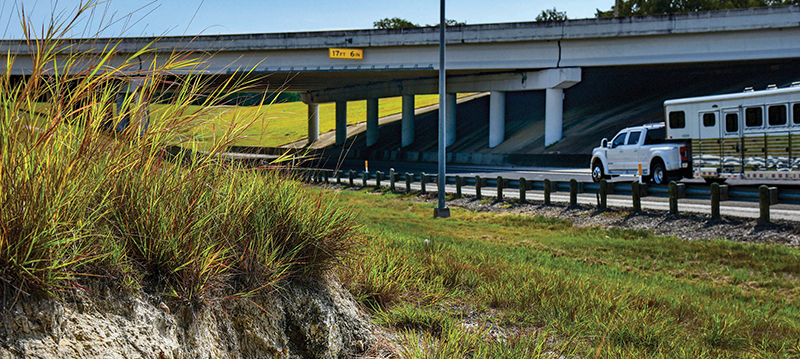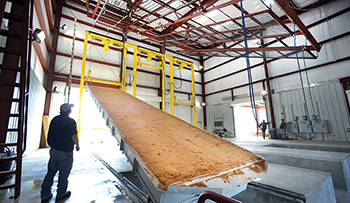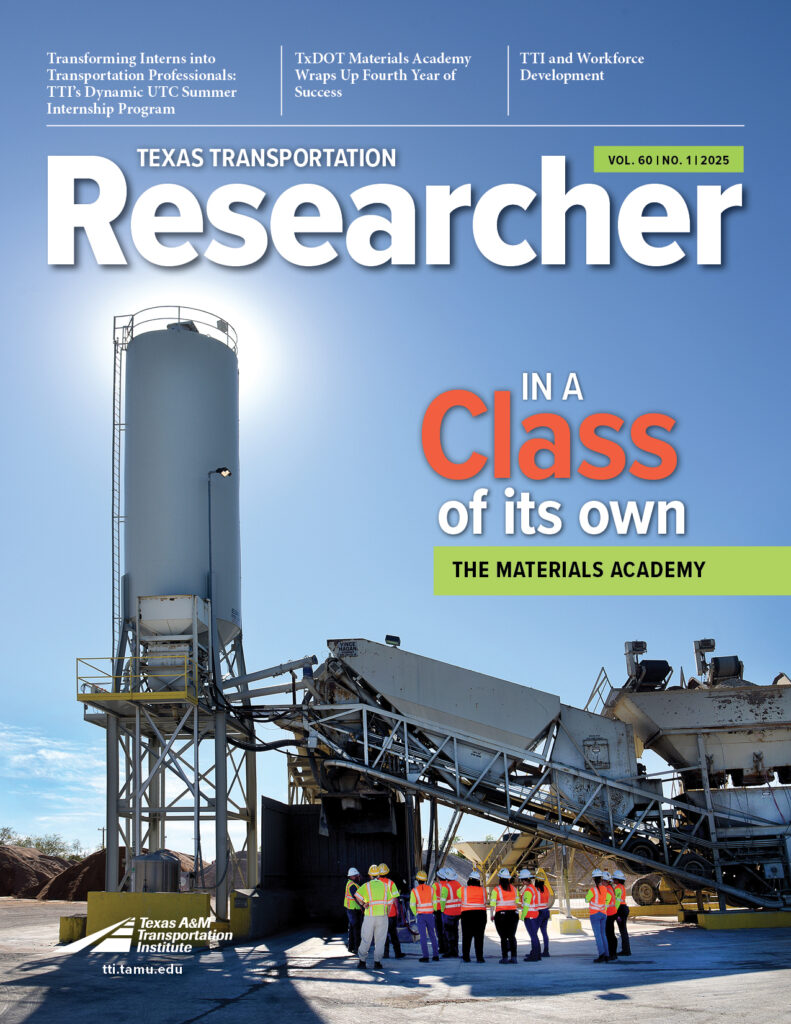TTI/TxDOT-Developed Test Method Recognized as Official ASTM Standard for Erosion Control on Slopes
FROM VOLUME 56, NUMBER 3 (2020)

FROM VOLUME 56,
NUMBER 3 (2020)

But not all erosion-mitigation products are created equal. To determine which ones are most effective, the Texas A&M Transportation Institute (TTI) Sediment and Erosion Control (SEC) Lab and the Texas Department of Transportation (TxDOT) have developed a testing procedure that is now an official ASTM test standard recognized across the globe: ASTM D8297 / D8297M–20. Named Standard Test Method for Determination of Erosion Control Products (ECP) Performance in Protecting Slopes from Sequential Rainfall-Induced Erosion Using a Tilted Bed Slope, the standard represents the culmination of more than 20 years of TTI–TxDOT collaboration. The ASTM standard’s official status was about a decade in the making. TTI and TxDOT worked with the ASTM D18 Soil and Rock Committee on questions, clarifications and justifications to finalize the standard.
TTI Assistant Research Scientist Jett McFalls says, “This standard proves the test method’s ability to identify the most effective slope protection devices, which will result in better protection of our water and environment. We’re currently working on developing additional standards for sediment control devices as well as channel protection.”
Founded in 1898, ASTM International is one of the largest international standards development organizations in the world, serving 30,000 members from more than 140 countries. ASTM publishes more than 12,000 ASTM standards each year in a volume of the Annual Book of ASTM Standards or via the ASTM website. Many global industries, institutions and individuals recognize and use ASTM standards to improve performance and processes across a wide array of industries.

Michael Robeson, technical development manager for Profile Products LLC, served as primary editor and technical contact throughout the development process. “ASTM is a consensus-based standards development organization,” says Robeson, “and it’s excellent to have been a part of the large undertaking it was to formalize a testing method that TTI and TxDOT have been using for decades.”
TTI Research Specialist II Derrold Foster comments, “We’re excited here at the TTI SEC lab that this test method, which is such an effective and accepted test procedure within our industry, has gained ASTM approval. We would like to thank Michael Robeson, who initially drafted this test method as an ASTM work item, served as primary editor and technical contact throughout the development process, and worked so effectively with us at TTI and so tirelessly to see this come to fruition.”
For more than three decades and to refine the method until it was suitable for adoption, TTI researchers at the Institute’s SEC Lab tested and evaluated how effectively erosion control products protect hillsides and slopes along roadways from erosion due to rainfall. The lab’s team built portable tilting test beds and conducted tests via the lab’s indoor rainfall simulator. TTI and TxDOT worked together to initiate and refine these tests, originally known as the “TxDOT test method.” The erosion control industry has widely used the method for years, and in that time it gained recognition as one of the most effective test methods available. Not only is the new standard currently the sole test method for testing and approving slope protection products for TxDOT, it is also used and accepted — either exclusively or as one of only two approved test methods — by departments of transportation, counties and municipalities worldwide.
“Working together to create this test method is a first-rate example of interagency teamwork,” states Dennis Markwardt, former director of vegetation management for TxDOT. Now retired, Markwardt oversaw the method’s development for the department. “TxDOT’s collaboration with TTI produced the best test method for erosion control products in the nation,” he says. “And now that it’s recognized by ASTM, agencies at all levels around the globe can benefit from it.”
The procedure’s effectiveness and wide acceptance contributed to the ASTM D18 Soil and Rock Committee’s decision in June 2020 to adopt it as an official ASTM test standard. The DOI is 10.1520/D8297_D8297M-20, and the most recent version is online at http://www.astm.org/cgi-bin/resolver.cgi?D8297D8297M.
For more information, Contact
Jett McFalls
“This standard proves the test method’s ability to identify the most effective slope protection devices, which will result in better protection of our water and environment. We’re currently working on developing additional standards for sediment control devices as well as channel protection.”
Jett McFalls, TTI Assistant Research Scientist
“The approval of this test method is another excellent example of TxDOT and TTI’s long-standing partnership. Our two agencies have collaborated on several initiatives that have set national and global standards in the transportation industry.”
James Stevenson, TxDOT Maintenance Division Director
The DOI is 10.1520/D8297_D8297M-20, and the most recent version is online at http://www.astm.org/cgi-bin/resolver.cgi?D8297D8297M.
